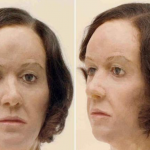In a grisly case that unfolded in Northern Ontario, Joseph Sutherland, a 62-year-old man from Moosonee, was convicted of the 40-year-old murders of two Toronto women, Susan Tice and Erin Gilmour.
This conviction hinged on the use of genetic genealogy, an investigative technique that utilises crime-scene DNA to track down suspects by tracing their family trees.
While Sutherland’s guilty plea has brought closure to the long-standing cold case, the use of DNA evidence and genetic genealogy in crime cases presents both pros and cons that deserve consideration.
Pros of DNA Evidence and Genetic Genealogy:
- Forensic Advancement: DNA evidence has been hailed as “probably the greatest forensic advancement since the advent of fingerprinting.” It offers a high degree of accuracy in identifying individuals and can play a crucial role in solving crimes.
- Actual Innocence: DNA evidence has the power to prove the innocence of individuals, even when other evidence may suggest guilt. It has led to the exoneration of wrongfully convicted individuals in various cases.
- Longevity: Properly stored DNA evidence can remain viable for years, which is particularly valuable in cases where investigations and court proceedings extend over extended periods.
- Database Searches: Law enforcement agencies can search for DNA matches in databases, aiding in identifying suspects and connecting crimes across different jurisdictions.
- Reliability: DNA evidence is considered more reliable than eyewitness testimony, which can be subject to biases and inaccuracies.
Cons of DNA Evidence:
- Limited Presence: DNA evidence is not present at every crime scene, limiting its applicability in certain cases.
- Supplemental Evidence Required: While DNA evidence is valuable, it often needs to be supplemented with other forms of evidence such as confessions, forensic evidence, or murder weapons, as juries may not solely rely on DNA evidence for their verdicts.
- Human Error: The reliability of DNA evidence can be compromised due to human errors like a lack of training, sloppy handling, and cross-contamination in the laboratory.
- Privacy Concerns: DNA samples can raise privacy concerns as they can reveal sensitive information about an individual’s family relationships, ancestry, and potential for diseases.
- Risk of Framing: Criminals may attempt to plant DNA evidence to falsely incriminate innocent individuals, a practice known as “crime framing.”
In the case of Joseph Sutherland, genetic genealogy played a pivotal role in identifying him as a suspect after decades of stagnant progress in the investigation. Toronto Police used this technique to narrow down potential suspects, ultimately leading to Sutherland’s confession and guilty plea. However, the use of genetic genealogy has also raised privacy concerns, as it relies on databases built from the willingly provided genetic information of individuals who may not have consented to its use in law enforcement searches.
Despite these concerns, the successful resolution of cold cases like this one demonstrates the potential benefits of DNA evidence and genetic genealogy in bringing justice to victims and their families. However, it also underscores the need for transparency, accountability, and safeguards to protect the privacy rights of law-abiding citizens as these techniques continue to evolve and become more prevalent in criminal investigations.
Image Source:
- Erin Gilmour with her younger brother Sean: The Globe and Mail





